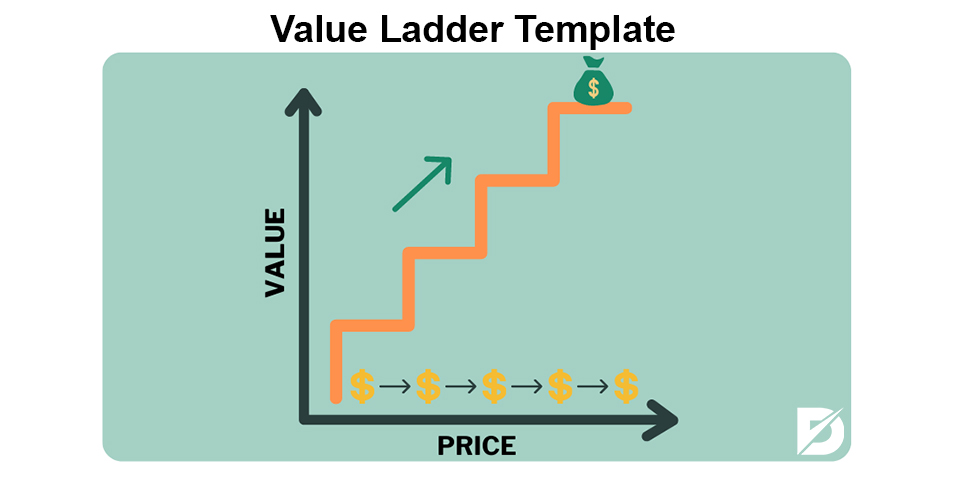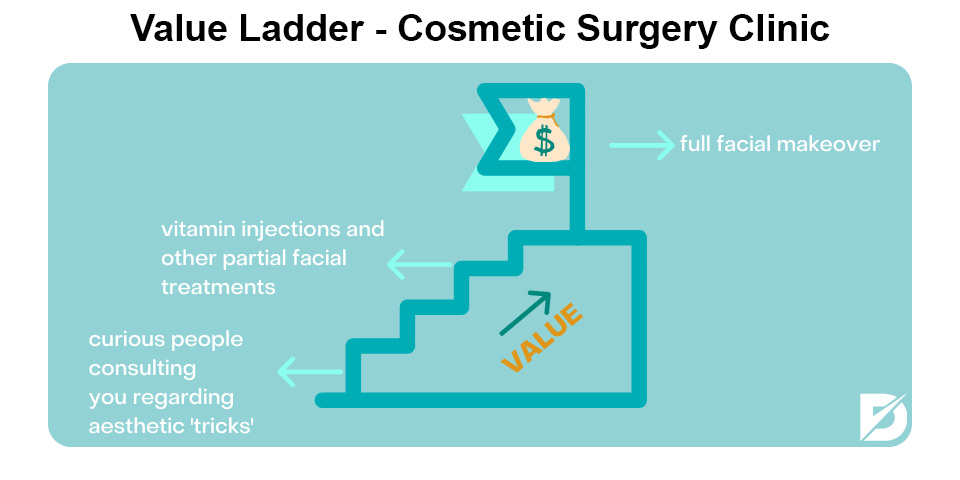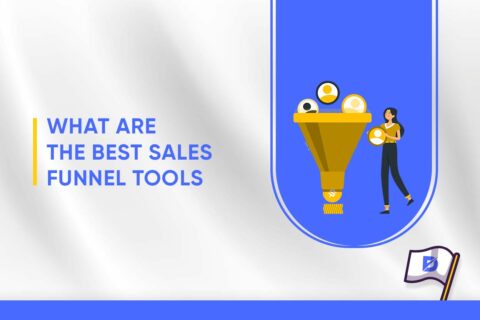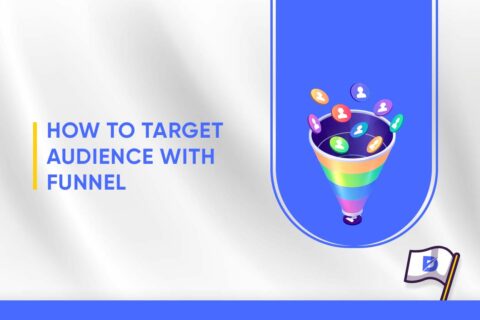Today we would like to take a moment to discuss one of the essential concepts of the business world: the value ladder. To be more exact, it’s more than just a concept. It’s a whole methodology in itself. Why is that? Because a value ladder (also called a sales ladder) represents a range of products and services, you offer progressively increasing value and price. So even if you never heard about it, you can already flair a potential gain, right? Simply put, it’s a process that makes you sell more expensive and valuable goods.
Now let’s elaborate a little further.
What Is a Value?
The term value has kept popping up since the first line of our article. But what do we mean by that? Does it only encompass the price of something or its worth in monetary terms? No, certainly not. Value is also about the perception of customers. On the one hand, this perception is closely related to customers’ advantages from a certain product or service. The price-quality ratio is one of the decisive factors here. On the other hand, the very same perception also includes the relationship the customers develop with the brand that provides the product or service in question.
To sum it up, value is quite a complex, multidimensional measure. But we’re not here to complicate things for you. What you need to retain from all that is simple: A value ladder will draw several kinds of benefits to you at once.
Value Ladder Template
Before designing your template (or downloading one among those available online), you need to picture what’s in it.
We have already mentioned that the process is ascending, with a progressive increase in value and price.
It typically starts with entry-level products. These are usually low-cost and not very profitable for the business that launches them. So you don’t spend much on them, but you don’t earn much either. At this stage, what matters the most is to attracting people and introducing them to your brand. So no big monetary expectations here. Not yet. All you want now is to familiarize potential customers with your offer. Need some consolation? Well, the money you get from those cheaper goods can still help you cover your advertising costs.

If you play your cards right, your clientele might climb up the value ladder and reach the next level, namely the mid-level products. In effect, a customer who’s had a positive experience regarding your brand during the previous stage is likely to return… and ask for more. This kind of satisfied customer is also ready to pay more to get more sophisticated goods. Mid-level products are also the ones that are likely to start bringing you the first profits.
Once you consolidate your relationship with the customers from the earlier stages, you can slowly lead them to your top-of-the-line products. These are like your ‘greatest hits’. They represent your highest value and, thus, the highest priced goods, your flagship products. In purely financial terms, this is where things get truly interesting for you. Indeed, you will get a major part of your profits from the sales of such products.
Now that we have the skeleton of the ladder let’s illustrate it with some examples.
Value Ladder Examples
Let’s suppose you own a digital marketing agency. You may come across a client asking for a simple audit.
If you impress them thanks to your expertise (and by fixing possible issues through the audit), the same client may return to you and request additional services. It might be a PPC (pay-per-click) campaign or one of your backlink strategies and packages. As you can see, this means they are already climbing up your value ladder.
And if you keep nurturing them properly, they might even decide to subscribe to one of your full-fledged SEO (Search Engine Optimization) plans.

Let’s now suppose you own a cosmetic surgery clinic. At the bottom of the ladder, we would have curious people consulting you regarding aesthetic ‘tricks’ best suitable for themselves.
These consultations may then evolve into vitamin injections and other partial facial treatments. In other terms, they provide more costly and complex services.
Longer-term clients who developed a sufficient amount of trust in your expertise may ask for a full facial makeover.
Regardless of the industry, you can notice that the ladder always follows more or less the same logical progression. It starts with cheaper (sometimes even free) and simpler offers. Then, as you earn trust and loyalty from your target audience, you become ready to commercialize more expensive and advanced products and services.
A Stairway to Heaven… for Your Business
Pun intended. A value ladder is definitely a secure, reasonable, yet effective strategy for customer retention and lasting profits. Far from wild and random marketing attempts, it allows you to know where to start and then increase the dose at the right time. You can also see it as a trust builder since you reveal things to your public in a progressive way instead of bombarding them from day 1.
Frequently Asked Questions About
Yes, it probably does. We are talking about a tool that can allow you to outperform your competitors significantly. Instead of getting wild and compulsively imitating them, you can use a ladder for a more cautious yet effective approach. This also gives enough time and space to your clientele to truly evaluate what they get from you. Their increasing satisfaction will make you retain them in the longer term.
The term bait refers to the free offers made to the public during the first stage. It’s a strategy aiming at attracting potential customers.
Free offers are often cited in this context. However, they are not mandatory. You can charge your customers right from the start. However, modest beginnings (read ‘accessible prices’) are always preferable when trying to promote their brand and products for the first time.





No comments to show.